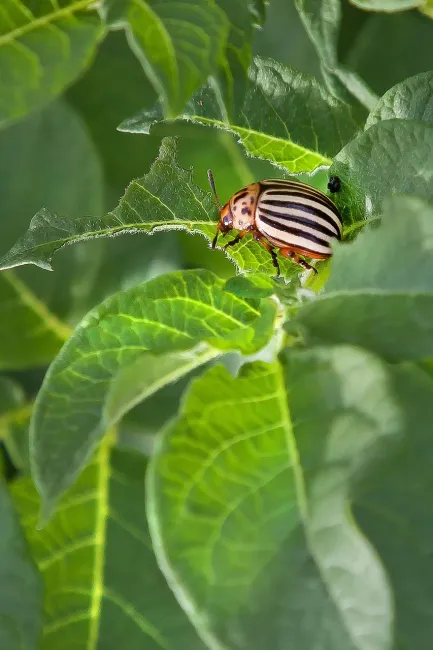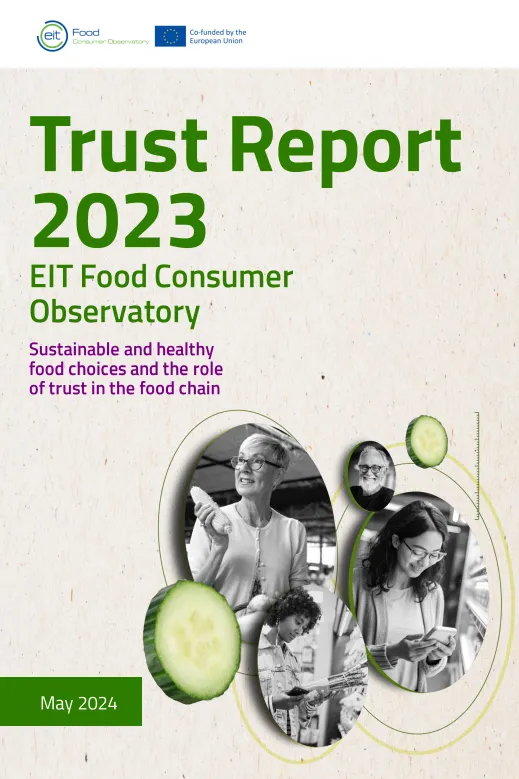Gene drives are landscape-scale gene editing technologies that have the potential to reduce pests, crop damage, pesticide use and crop prices. One potential negative impact explored by this paper is the restriction of consumer choice affecting consumer welfare. In order to understand this impact, the paper surveyed US consumers about their preferences regarding gene drives compared with pesticide use and GM crops.

Summary
Gene drives are engineered self-spreading biocontrol (using other organisms to control pests) designed so that a small release of pest modified with desirable traits (ones that reduce pests impacts on crops) result in permanent spread of the genetically modified pest organism throughout a region. Such traits could include weakened growth and survival rates, altered host-plant preferences, increased susceptibility to pesticides or disease inoculation. Gene drives could potentially help with pest control, increasing pest pressure from climate change, invasive species, environmental impacts of pesticides and pesticide resistance. This paper investigates a previously unconsidered consumer externality that could arise from these technologies; restriction on consumer choice resulting from the inability to grow non-gene drive crops. Consumers who prefer food produced without genetic engineered technologies would therefore find it more difficult or costly to find such products. At the same time gene drives, if successful, could offer a potential substitute for intensive application of chemical pesticides, reducing food prices. Evaluating consumer welfare must therefore balance price saving with the effects of choices restriction.
This paper uses two potential proposed applications of gene drives; one to control the soft-fruit pest spotted wing drosophila and the other to control the Asian Citrus Psyllid, the insect vector for Citrus greening disease. The authors used a stated choice survey on a sample of the US public in which detailed information was provided to participants about the prospect of using gene drives to control pests of these products. They found that on average, consumers exhibit a lower willingness to pay for these products when gene drives were used. However the reduction in willingness to pay is significantly smaller than reductions associated with higher insecticide spraying or genetic engineering of the plant itself. Moreover, the majority of consumers would not avoid purchasing products grown using gene drives. They then used these results to evaluate the expected aggregate consumer welfare impact of gene drive releases for pest control in the production of these foods. They did this through constructing gene drive release scenarios where gene drive insect releases mitigate increases in pesticide use and product prices but also remove non-gene-drive alternatives from the choice set. They calculated the minimum pest-induced consumer price increase under which a choice-restricting gene drive release would improve aggregate consumer welfare. In the case of spotted wing drosophila damage in the production of fresh blueberries, pest-induced price increases of over 30% would be necessary for a gene drive release to improve aggregate surplus for U.S. fresh blueberry consumers. In the case of a gene drive citrus psyllid aimed at eliminating citrus greening, disease-induced price increases of around 15% would be necessary.
The authors give a brief history of the technology. Gene drives emerged from a previous population biocontrol technique called the sterile insect technique, where sterilised insects are continuously released into an environment, reproducing and increasing sterility until population collapse. This technique is effective but expensive as it requires continuous release of sterilised insects over a long period. Gene drives are self-spreading mechanisms that could dramatically improve the efficiency and sustainability of biocontrol, by reducing the duration of modified insect releases needed to achieve pest elimination. These work by engineering a parent insect to spread genetic elements to offspring at frequencies greater than 50% inheritance rate. No gene drive pest has been released but research is actively pursuing this strategy for some time and making rapid progress, with particular focus on anti-malarial gene drives. The two specific examples discussed are two of the first attempts made to extend this technology from public health to agricultural production.
Abstract
Genetically engineered insects have gained attention as regionally deployed pest control technologies, with substantial applications in agriculture for combatting intractable crop pests and diseases. One potential tool is a ‘gene drive’, using CRISPR-based gene editing. In gene drive, preferentially inherited, engineered traits are spread throughout a geographic area to reduce pest populations or inhibit disease transmission, while also potentially reducing pesticide use and crop prices. But the self-perpetuating nature of gene drives presents a consequence, in that consumers could eventually be limited to only host crops grown in the presence of these genetically engineered insects. In this study, we analyze potential consumer welfare impacts of these technologies using discrete choice experiment data from a representative sample of U.S. adults, examining preferences regarding gene drive use to control spotted wing drosophila in blueberries and Asian citrus psyllid in orange juice (OJ) production. We find smaller average discounts for gene drives versus increased conventional pesticide use or genetically modified crops. Only 27% and 25% of blueberry and OJ consumers, respectively, are estimated to derive disutility from gene drives. However, gene drive disutility for these consumers is so large that elimination of non-drive options from their choice sets results in negative (blueberries) or neutral (OJ) effects to aggregate consumer welfare when weighed against gains to other consumers from reduced prices. Positive welfare effects are recovered by retaining availability of non-gene-drive products. We argue that this type of analysis will be increasingly important as landscape-level biotechnologies are deployed to address challenges to agricultural sustainability.
Reference
Jones, M.S. and Brown, Z.S., 2023. Food for thought: Assessing the consumer welfare impacts of deploying irreversible, landscape-scale biotechnologies. Food Policy, 121, p.102529.
Find the article here




Comments (0)